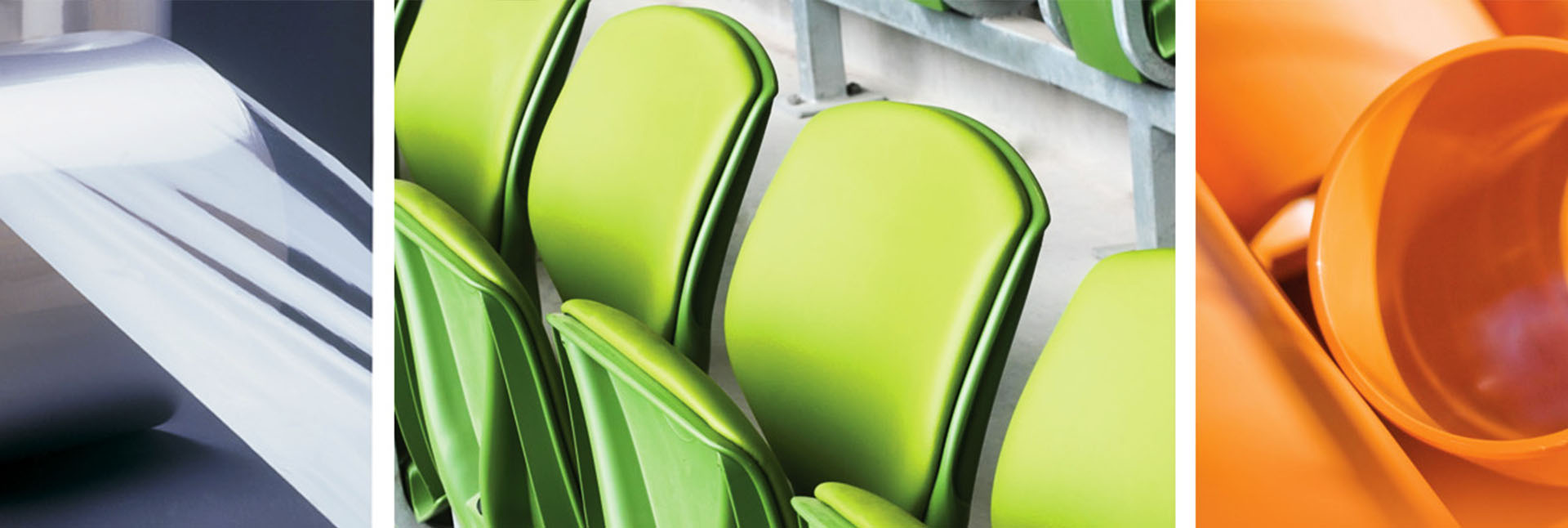Polymer Additives
Chemicals added to the base polymer
What we provide?
Extensive range of polymer additives for PVC, Polyolefins, Styrenics, Nylon and other Engineering Plastics such as
Categories

The broad range of antioxidants offered by our Polymer Division can play an important role in counteracting the effects of degradation. The choice of antioxidant to be used at each stage of the polymer life cycle will depend on factors such as compatibility, color and thermal stability, volatility, and efficiency.
These are only some of our most well known Antioxidants:
- An organo-phosphite antioxidant that exhibits excellent hydrolytic stability.
- A high molecular weight hindered phenolic antioxidant that provides very low volatility and excellent resistance to extraction from polymer compounds.
- A family of solid binary synergistic blends used to protect polymers during processing and long term aging.

Daily sunshine and its UV radiation have a deteriorating effect on many organic materials, polymers, and on your skin. UV stabilizers play an important role in polymers by counteracting the effects of the sun. We offer a wide range of UV absorbers and light stabilizers for protection against UV radiation. These UV stabilizers are used in items such as greenhouse film, outdoor furniture, textile fibres, automotive plastic parts, paints and coatings. In addition, our UV stabilizers are added to cosmetics such as skin and hair products to protect from light induced damage.
One of the most well-known UV Stabilizer range we distribute is Hindered Amine Light Stabilizers (HALS), which protects organic polymers against the degradation caused by exposure to ultraviolet radiation.

Our Range of Fatty Amides are used for the processing of Polyolefins, Engineering Plastics and other Thermoplastics:
- Primary Amides used in Polyolefins as Slip Additives
- Primary Amides used in Polyolefins as Antiblock Additives
- Secondary Amides for processing of Engineering Plastics at high temperature above 260 ℃
- Medium Slip additives for Polyolefin films

In Processing of PVC, Lubricants are essential. They play an important role in the processing of Rigid and Plasticized PVC.
Functional Types
- Internal Lubricants
- External Lubricants
Internal Lubricants
- Compatible with PVC
- Reduce melt viscosity
- Promote flow
External Lubricant
- Synthetic complex oleochemical derivative
- Exhibits strong release properties
- Sufficient compatibility with PVC
- Suitable for transparent PVC applications

Synthetic waxes are designed to perform a variety of functions required in processing of plastics. In Styrenic and Engineering plastics, depending on the polymer characteristics and requirements, these additive offer following advantages.
Major benefits:
- High temperature lubrication
- Melt viscosity reduction
- Improve flow
- Mould release
- Rheology modification
- Wetting & Disperesion

Multifunctional Processing Aids (MPA) are developed especially for filled Thermoplastic compounds, Color masterbatches and Thermosetting compounds.
These perform on the principle of hydrogen bonding between polymer and filler (or pigment) to impart better mechanical properties (or color strength)
These high performance MPA:
- Improve flow
- Help dispersion of fillers, pigments & additives
- Aid coupling
- Improve mold release
- Enhance surface finish / gloss
- Are non-Blooming
Major applications:
- Color masterbatches
- Filled compounds / Antifab compounds
- Automobile / Furniture compounds
- Wood filled composites
- Engineering / Styrene Compounds

Internal and external type antistatic agents are recommended for use in various polymers like Polyethylene, polypropylene, ABS, PVC etc. to reduce static charge build up on plastic surfaces during processing and handling.
These Antistatic agents are either Nitrogen free or Nitrogen containing.
In plastics, metallic stearates are used as lubrication aids, mold release agents, or acid scavengers due to their high thermal stability properties. Lastly, these polymer stabilizers are used in plastics melt processing to optimize overall production output and produce finished articles with smoother surfaces.
The most common metallic stearates which are used in polymer industries:
- Calcium Stearate
- Zinc Stearate
- Magnesium Stearate
- Sodium Stearate
- Aluminum Stearate
